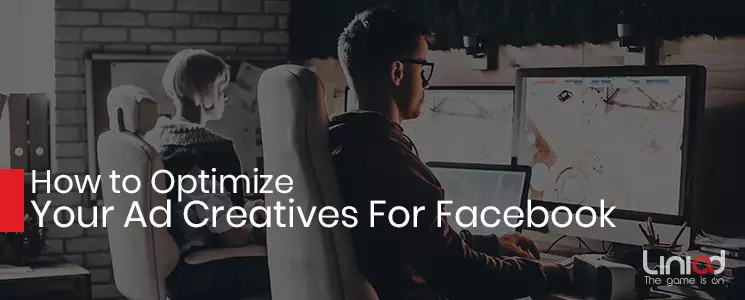How to Optimize Your Ad Creatives For Facebook

The world of Facebook ads is both exciting and challenging at the same time. The killer app is ready, yet finding the right ad creatives to promote is… not so simple. From creating and executing thousands of Facebook ads, I can safely say that optimizing creatives for Facebook falls into two succinct categories; the ad structure itself, and testing. Let us break down for you our winning tips for optimized ad creatives:
There needs to be a balance of art and science when constructing the perfect Facebook ads for best performance possible. The core elements (image, video, text etc) play an integral part when trying to achieve optimization:
- Text: ad creatives that tend to perform better are ones that use little to no text in images, but rather isolate text to designated areas (ie, headline/ link boxes). Remember, when it comes to text, Facebook (and indeed Instagram) users scan ads quickly on mobile (see this report) – typically in about 0.4 seconds (compared to 2-3 seconds on desktop)- so with this in mind, get your message across fast- keep your text short, concise, to the point!
- Image: of course successful imagery in your ad depends on an incredible amount of variables, but basic rules still stand. Multiple images used together tend to perform significantly better than a singular image. Facebook’s carousel format allows ads to show several images to scroll through … at the same cost. Great for apps that need to showcase different elements. Movement is also key – ads that have some kind of movement (whether it be used with Hyperlapse, Boomerang, Legend, Spark…) stand out in newsfeeds and can perform better – particularly when placed in a Facebook story environment. Slideshows are also a great way to turn static images into lightweight and dynamic video ads with next to no additional production investment. Compared to video, slideshow ads load pretty quickly so can be delivered to devices without needing mighty connection speeds.
- Video: content is consumed quickly on mobile, so it’s necessary that your video should fall in line. Chop down lengthy videos so they are a digestible 10-15 seconds. An added benefit of shortening videos is that they will now be eligible for in-stream placements. Videos also should fit natively to the mobile screen, not vice versa, so as content is typically consumed vertically, creating 9:16 video ads will prove great for performance. Facebook even offers a comprehensive guide when it comes to aspect ratios of videos for specific placements.
- Call-to-Action: having a call-to-action (CTA) on top of your ad creative goes without saying, but note that Facebook provide a variety of CTA buttons – it is critical to pick the right one to create maximum engagement with your audience- a split test should determine the strongest button for the chosen audience. Speaking of testing…
Testing
- Dynamic Creative Optimization (DCO): Facebook’s DCO tool recently came to life as a way to deliver the best combination of creative assets via machine learning. It reads and delivers all elements of selected ads (image/ video, title, text, CTA etc) and runs a mixed combination across different audiences. This could be a great way to optimize creative assets for app install and conversions as it supports both single image and single video ads. Just remember to stick to your current bidding practice, use broad targeting and of course make sure that your asset combinations make sense together – …and don’t be scared to switch out assets based on how they are performing.

DCO might indeed be based on AI, but it still needs care and attention. You need to keep a close eye on performance – the best creative could take the bulk of views, but may not exactly be the best investment in the long run.
- Facebook split testing: this method allows you to create multiple ad sets – each with one different variable. Facebook then divides the targeted audience into non-overlapping groups, changing only one variable. Performance is measured on your campaign objective so you can easily deduce the strongest performer. However, because there are a few elements here left to madame chance ( audiences for one), it is best practise to start simple and wait until good results are coming in before split testing. To get a more in depth understanding on split testing, get in touch.
- The manual approach: this is basically putting several ads with different creatives in one ad set and seeing how they perform. This method is often seen as hard work with a certain level of trust that Facebook will serve the best performing ads. This method is not as thorough as the rest, yet even though you will not get equal spread of traffic for all elements, you will get a decent enough understanding of which ad will perform better.
Optimizing creatives for best possible Facebook performance is essential – yet how you go about it is another question entirely. Once the ad hits the right audience, you need it to perform its very best, and this is where optimized creatives come into play. Without consulting experts in this field, your chosen combination of the above tips and tricks will be the best way forward, but of course you could save yourself time, effort and errors by consulting a Facebook ad expert.
